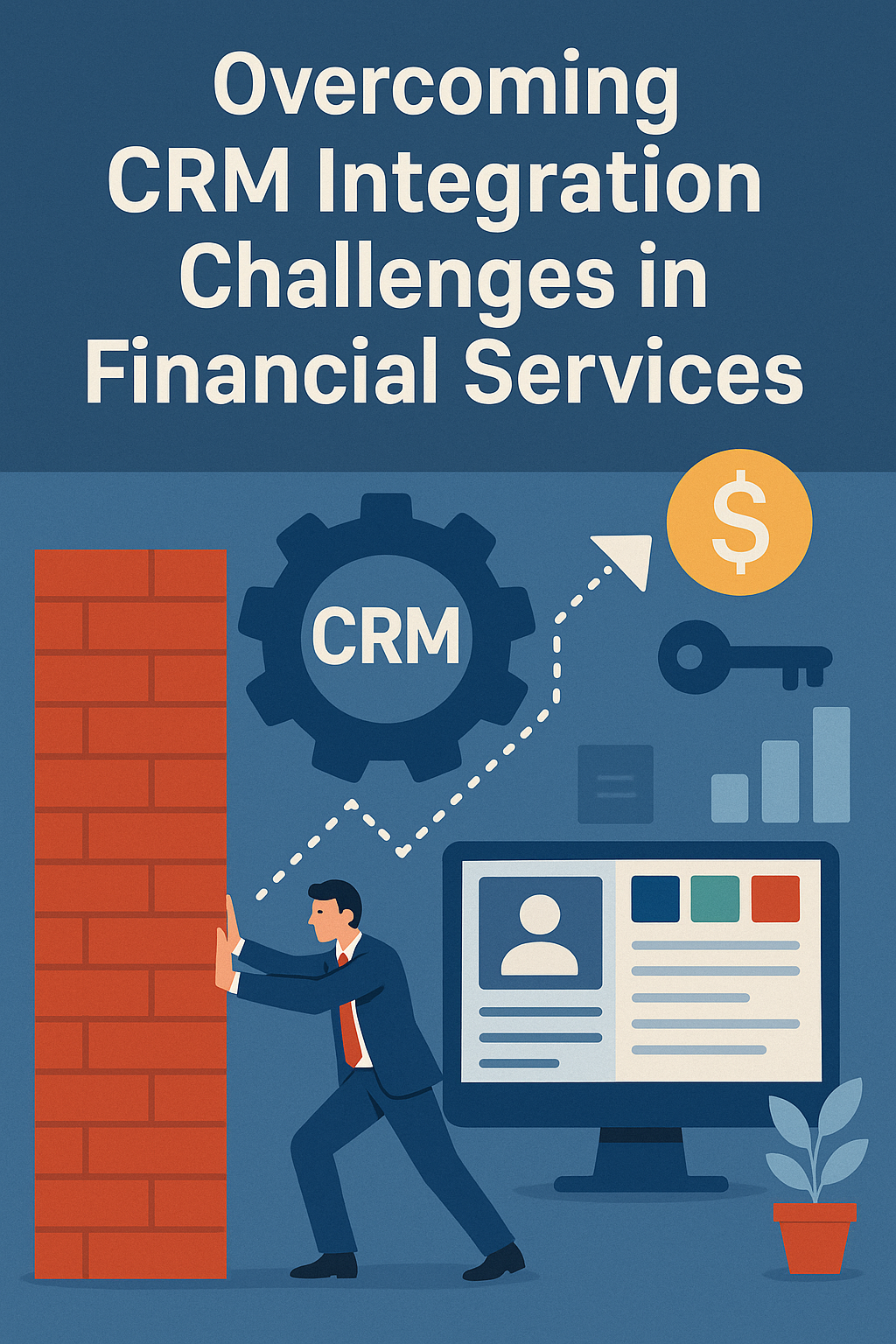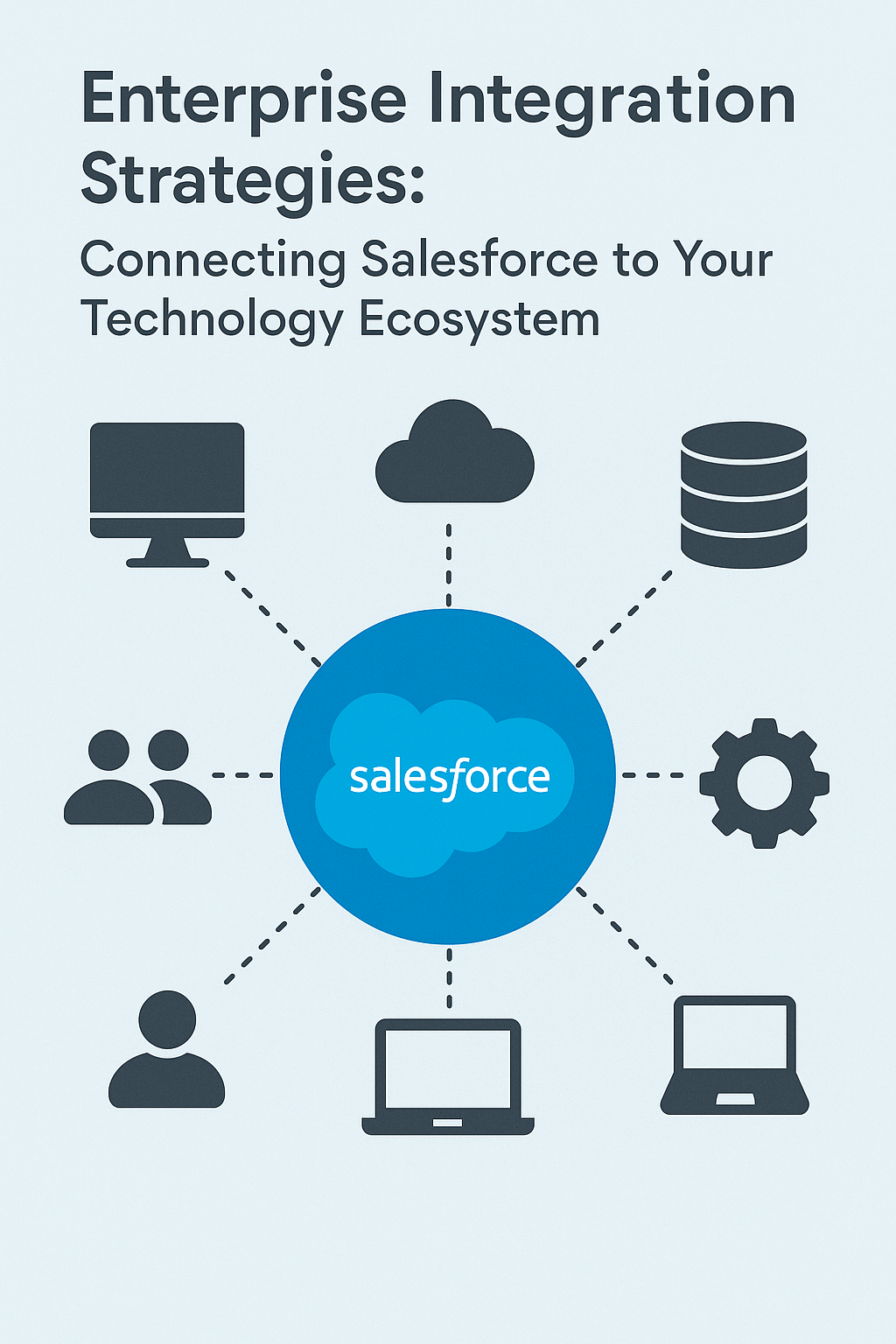
A Practical Guide to Seamless System Integration in Financial Services
Customer Relationship Management (CRM) systems are the backbone of modern financial services operations. Yet for many institutions, integrating these systems with existing infrastructure feels like trying to fit a square peg in a round hole. The result? Frustrated teams, fragmented data, and missed opportunities.
If you're nodding your head right now, you're not alone. At Vantage Point, we've helped countless financial institutions navigate these choppy waters. Here's what we've learned about overcoming CRM integration challenges—and how you can too.
Why CRM Integration Is Different in Financial Services
Let's be honest: CRM integration isn't just about connecting systems. It's about creating a unified ecosystem where data flows seamlessly, processes run automatically, and insights are always at your fingertips.
For financial services organizations, the stakes are even higher. Regulatory requirements, legacy systems, and the sensitive nature of financial data create a perfect storm of complexity.
The Five Integration Challenges Keeping You Up at Night
1. Legacy System Compatibility
Your core banking system was built when flip phones were cutting-edge technology. Now you're trying to connect it to a modern CRM, and nothing seems to fit.
Sound familiar? Many financial institutions are stuck with legacy systems that:
- Use outdated protocols and data formats
- Lack API capabilities
- Store data in proprietary formats that play nicely with exactly nothing
- Can't scale to meet modern demands
Our approach: Instead of forcing systems to speak the same language, we create translation layers that bridge the gap. Think of it as having a skilled interpreter at a multilingual conference—everyone gets heard, and nothing gets lost in translation.
2. Data Silos and Fragmentation
Your client's investment data lives in one system. Their banking history is in another. Service interactions are scattered across three more platforms. When a relationship manager needs a complete picture? They're playing detective across five different screens.
This fragmentation creates:
- Incomplete customer views that miss critical context
- Duplicate data entry (and the errors that come with it)
- Inconsistent information that erodes trust
- Decision-making delays that cost opportunities
Our approach: We implement master data management frameworks that establish a single source of truth. Every department gets access to the same complete, accurate client data—no detective work required.
3. Security and Compliance Requirements
In financial services, "close enough" doesn't cut it when it comes to compliance. You're juggling GDPR, SOC 2, FINRA, SEC regulations, and a dozen other acronyms that all mean one thing: get it right or face serious consequences.
Our approach: Security isn't an afterthought—it's baked into every integration layer. We implement role-based access controls, end-to-end encryption, comprehensive audit trails, and continuous compliance monitoring. You get functionality without compromise.
4. Real-Time Data Synchronization
In financial services, yesterday's data might as well be ancient history. Your team needs real-time information, but you're dealing with:
- Latency that makes data stale before it's useful
- Conflicting information from multiple sources
- Systems that slow to a crawl during synchronization
- The constant battle to maintain consistency across platforms
Our approach: Event-driven architecture ensures real-time synchronization with minimal latency. Our intelligent conflict resolution algorithms and optimized data pipelines maintain peak performance even during your busiest trading days.
5. User Adoption and Change Management
You've invested millions in new technology. Your integration works perfectly. But your team? They're still using the old system because "that's how we've always done it."
Technology is only as effective as the people using it. Common roadblocks include:
- Resistance to new workflows
- Insufficient training and support
- Complex interfaces that require a PhD to navigate
- Disruption that grinds productivity to a halt
Our approach: We design for humans first, technology second. Intuitive interfaces, comprehensive training programs, and phased rollouts minimize disruption while maximizing adoption. Your team actually wants to use the new system.
The Vantage Point Integration Framework
We don't believe in one-size-fits-all solutions. Instead, we follow a proven four-phase framework tailored to your unique needs:
Phase 1: Discovery and Assessment
We audit your existing systems, map data flows, identify integration points, and review compliance requirements. Think of it as a comprehensive health check for your technology ecosystem.
Phase 2: Strategic Design
Our architects develop your custom integration blueprint, complete with data governance frameworks, security protocols, and scalability planning. This is where your vision becomes a viable roadmap.
Phase 3: Agile Implementation
We implement in iterative sprints, with continuous testing, stakeholder feedback, and risk mitigation at every stage. You see progress quickly and can course-correct as needed.
Phase 4: Optimization and Support
Post-implementation, we monitor performance, drive continuous improvements, resolve issues proactively, and conduct regular compliance audits. Your integration keeps getting better, not stagnant.
Real Results from Real Clients
Numbers don't lie. Organizations implementing our CRM integration strategies typically see:
- 40-60% reduction in data entry time (your team thanks you)
- 85%+ data accuracy across all systems (goodbye, reconciliation headaches)
- 50% faster client onboarding (first impressions matter)
- 35% improvement in client satisfaction scores (happy clients, happy business)
- Complete compliance with regulatory requirements (sleep better at night)
- 30% increase in cross-selling opportunities (unified insights drive revenue)
Six Best Practices for Integration Success
1. Start with Clear Objectives
What business outcomes are you targeting? How will you measure success? Get specific before you start building.
2. Prioritize Data Quality
Garbage in, garbage out. Clean, standardized data is your foundation—invest in data quality before integration begins.
3. Design for Scalability
Your needs will evolve. Build an architecture that accommodates future growth, new systems, and changing requirements.
4. Implement Robust Error Handling
Things will go wrong. Establish monitoring, alerting, and automated resolution to minimize disruption when they do.
5. Maintain Comprehensive Documentation
Future you (and your successors) will thank present you. Document integration points, data flows, business rules, and procedures.
6. Foster Cross-Functional Collaboration
Integration isn't just an IT project. Success requires collaboration between IT, operations, compliance, and business stakeholders.
Overcoming Common Roadblocks
Budget constraints? Adopt a phased approach that delivers quick wins and builds momentum for additional investment.
Resource limitations? Partner with experienced specialists who can augment your team and transfer knowledge.
Unclear requirements? Implement discovery workshops and proof-of-concept projects to clarify needs.
Resistance to change? Engage stakeholders early, demonstrate value through pilots, and provide comprehensive change management support.
What's Next for CRM Integration?
The future is arriving faster than you think:
- AI-Powered Integration: Machine learning that automatically optimizes data flows and predicts issues before they happen
- Low-Code Integration: Tools that let business users create integrations without becoming developers
- Blockchain for Data Integrity: Distributed ledgers ensuring transparent, immutable audit trails
- Intelligent Automation: RPA and AI working together to automate complex workflows
Ready to Transform Your CRM Integration?
CRM integration challenges in financial services are complex, but they're far from insurmountable. With the right strategy, technology, and partner, you can overcome these hurdles and unlock the full potential of your CRM investment.
At Vantage Point, we've successfully guided numerous financial institutions through complex CRM integrations. Our proven methodologies, deep industry expertise, and unwavering commitment to your success ensure that your integration project delivers lasting value.
Let's talk about your integration challenges. Contact Vantage Point today to discover how our strategies can transform your operations, unify your data, and elevate client engagement.
About the Author
David Cockrum is the founder of Vantage Point and a former COO in the financial services industry. Having navigated complex CRM transformations from both operational and technology perspectives, David brings unique insights into the decision-making, stakeholder management, and execution challenges that financial services firms face during migration.
Ready to begin your CRM migration journey?
Partner with Vantage Point to benefit from proven frameworks, specialized expertise, and a structured approach that de-risks your migration while accelerating time-to-value.
-
-
- Email: david@vantagepoint.io
- Phone: (469) 652-7923
- Website: vantagepoint.io
-



